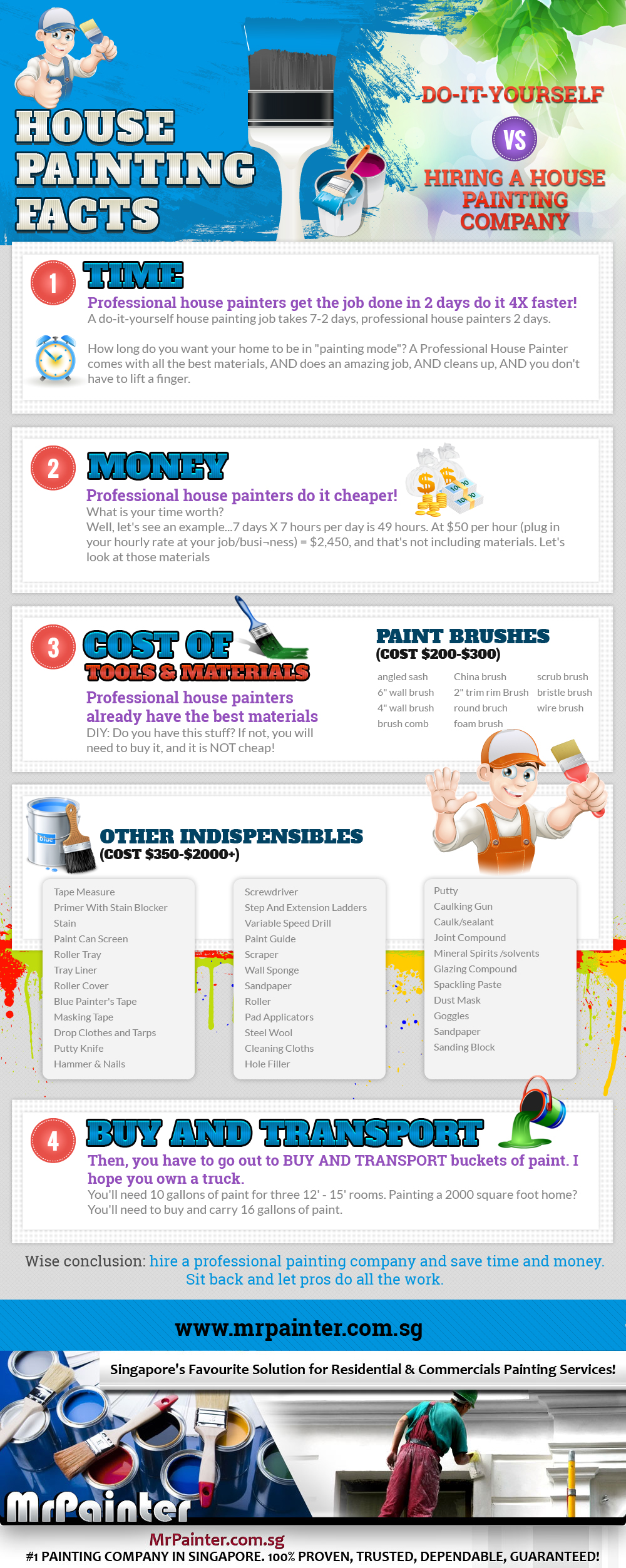The Influence Of Weather Conditions On Industrial Exterior Paint: Trick Factors To Consider
The Influence Of Weather Conditions On Industrial Exterior Paint: Trick Factors To Consider
Blog Article
Author-Rode Stiles
When you're preparing an industrial external paint project, don't take too lightly the impact of weather on your outcomes. You require to consider elements like temperature, humidity, and precipitation, as they can make or damage your paint task. For example, did you know that suitable conditions call for particular temperature level varieties and humidity degrees? Falling short to keep track of these facets can bring about unequal coatings or perhaps damages to fresh paint. Recognizing these aspects is key to accomplishing a durable, expert end result. So, what details weather conditions should you be wary of?
Temperature Considerations
When it involves business exterior painting, temperature level plays an essential function in the result of your job. If you're repainting in extreme warmth, the paint can dry out also swiftly, resulting in issues like bad attachment and irregular coatings. You want to go for temperature levels in between 50 ° F and 85 ° F for the very best results. Listed below 50 ° F, paint may not heal effectively, while over 85 ° F, you take the chance of blistering and breaking.
Timing your project with the best temperature levels is vital. Start your work early in the early morning or later in the mid-day when it's cooler, especially during hot months.
Also, consider the surface area temperature; it can be substantially greater than the air temperature level, specifically on sunny days. Utilize commercial building exterior painting to examine this before you start.
If temperature levels are uncertain, watch on the weather prediction. Unexpected temperature declines or heat waves can hinder your strategies. You don't want to begin painting only to have the problems transform mid-project.
Humidity Degrees
Humidity levels dramatically influence the success of your commercial outside paint job. When the humidity is too expensive, it can impede paint drying and healing, bring about a series of problems like poor attachment and finish high quality.
If you're intending a work during damp conditions, you may locate that the paint takes longer to completely dry, which can extend your project timeline and boost costs.
On the other hand, reduced moisture can likewise present difficulties. Paint may dry also promptly, preventing appropriate application and resulting in an unequal coating.
You'll want to check the humidity levels very closely to guarantee you're functioning within the optimal range, usually in between 40% and 70%.
To obtain the very best outcomes, take into consideration using a hygrometer to gauge humidity prior to beginning your task.
If you find the levels are outside the optimal variety, you might require to change your routine or choose paints designed for variable conditions.
Always seek advice from the manufacturer's guidelines for specific suggestions on moisture tolerance.
Rainfall Effect
Rainfall or snow can significantly disrupt your business outside painting strategies. When precipitation happens, it can get rid of newly applied paint or produce an unequal finish. Ideally, https://professional-painters-nea01110.mdkblog.com/39079904/dominate-the-intricacies-of-finding-a-painting-specialist-with-valuable-ideas-that-will-certainly-transform-your-job-experience wish to select days with completely dry weather condition to make certain the paint sticks effectively and remedies properly. If you're caught in a rain shower, it's best to stop the task and wait for conditions to improve.
Furthermore, snow can be much more destructive. Not just does it develop a damp surface area, however it can likewise lower temperatures, making it hard for paint to dry. This can cause issues like peeling or blistering down the line.
It's important to examine the weather forecast prior to beginning your project. If rain or snow is anticipated, consider rescheduling.
Constantly remember to allow appropriate drying out time in between coats, particularly if the weather condition continues to be unforeseeable.
Conclusion
In conclusion, watching on the climate is necessary for a successful industrial exterior painting project. By checking temperature, humidity, and rainfall, you can make sure the very best conditions for application and treating. Keep in mind to plan your work around desirable weather and constantly adhere to manufacturer guidelines. With the best approach, you'll accomplish a durable, stunning finish that can hold up against the components. Don't allow the climate catch you off-guard-- stay notified and paint clever!
